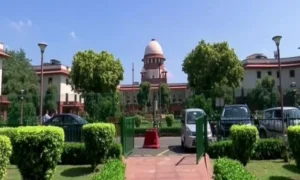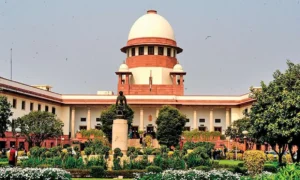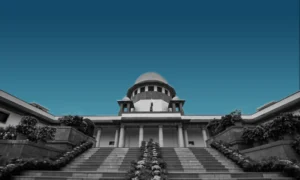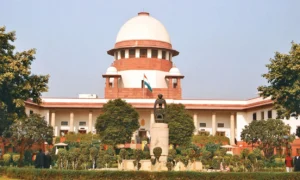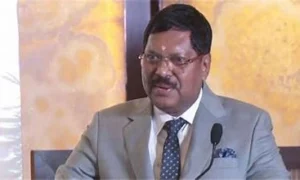
By Sujit Bhar
The alleged gang rape of a young medical student from Odisha in Durgapur’s IQ City Medical College on October 10 has once again torn open India’s festering wound—the absence of safety, respect and dignity for women in public and private spaces alike. What began as a horrifying allegation of gang rape of a second-year MBBS student in West Bengal’s industrial township has now morphed into a tangled web of suspicion, political mudslinging, and moral debate. As the police investigation continues—now suggesting a single assaulter rather than multiple—the larger questions that the case raises are far more disturbing than the event itself.
This case, like so many before it, is not only about an individual act of violence. It is a mirror reflecting how India, despite its constitutional promises, remains deeply patriarchal, politically cynical, and morally compromised. The Durgapur case, the police confusion, the political reactions, and even the social media frenzy that followed, show how quickly women’s trauma can become a spectacle—and how little actually changes on the ground.
A NATION FAILING ITS WOMEN
It is hard to write about another sexual assault case in India without feeling a sense of déjà vu. From the brutal gang rape and murder of Nirbhaya in Delhi in 2012 to the Kathua, Unnao, Hathras and RG Kar College cases—each tragedy has followed the same grim pattern: shock, protests, political blame games, police “clarifications,” and finally, silence.
The Durgapur case began similarly. The young student from Balasore was allegedly lured out of her hostel by a male classmate, assaulted in a forested stretch near Paranganj Kalipara crematorium, and left traumatized. Police initially spoke of “four or five men” being involved, later arrested three—SK Riyazuddin, Apu Barui, and Firdaus SK—and detained two others, including the girl’s classmate. Within days, the narrative began to shift, as police claimed technical and scientific evidence showed “one person” had sexually assaulted her, not a gang.
The contradictions may or may not be deliberate. But the larger picture is clear: every time a woman is assaulted in India, she faces not just the crime, but the disbelief, the insinuations, and the long wait for justice. According to NCRB data, one woman is raped every 28 minutes in India, and conviction rates in rape cases remain below 30 percent. The judicial process is excruciatingly slow, with survivors often re-traumatized during investigations and trials.
India’s legal system, despite laws like the Criminal Law (Amendment) Act, 2013, and the POCSO Act, still fails women at multiple levels—poor investigation, weak prosecution, political interference, and societal bias. The Durgapur case, like countless others, reveals the same institutional rot. The police themselves have publicly admitted that the male classmate’s “role is not beyond doubt”, yet there is little clarity or accountability. The college, instead of standing by its student, rushed to court seeking to bar “outsiders” from its campus, prioritizing reputation over responsibility.
In short, women in India continue to be failed—by the state, by the system, and by society.
“WHY WAS SHE OUT AT NIGHT?”
If there was anything more shocking than the crime itself, it was the reaction of West Bengal Chief Minister Mamata Banerjee. Speaking at a public meeting, she asked why the girl had gone out of her hostel “at 12.30 at night”. It was later confirmed through CCTV footage that the incident occurred around 9.30 pm—hardly the dead of night. Yet, the question was not about the timing, but the implication: that women bear partial responsibility for the violence inflicted upon them.
This statement sparked outrage, and rightly so. When the highest political executive of a state suggests that women should remain confined to “safe hours” or within campus boundaries, it sends a chilling message—that women’s freedom must be curbed for their safety, rather than the perpetrators being held accountable.
Banerjee’s comments reflect a mindset still pervasive in Indian politics: women’s safety is a private, conditional privilege, not a public, unconditional right. If women are told not to step out late, not to wear certain clothes, not to travel alone, or not to speak loudly, the state is essentially admitting it has failed to ensure safety and equality.
Political parties across the spectrum are guilty of this. The Opposition BJP, which seized upon the Durgapur incident to attack the Trinamool Congress government, conveniently ignored its own abysmal record on women’s issues elsewhere—from Hathras to Manipur. When politics becomes the focus, women become collateral damage in a war of rhetoric.
Respect for women in Indian politics is often performative—paraded on International Women’s Day, tokenized through “nari shakti” slogans, and forgotten in governance.
THE DELHI PRESS CONFERENCE
While the Durgapur case unfolded in West Bengal, another event in Delhi laid bare the hypocrisy of those who claim to champion women’s dignity. An Afghan delegation was allowed to hold a press conference in the national capital recently—and women journalists were barred from attending.
Male journalists walked in freely, while their female counterparts were stopped at the door. What was worse was the centre’s response: silence. Only after public outrage did the government issue a mild clarification that it was done by the Afghans and the Indian government had no role in this. It shows that the central government, too, is selective in its defence of women’s rights—loud when it suits political optics, mute when it risks diplomatic or ideological inconvenience.
For a government that frequently invokes women’s empowerment—from “Beti Bachao, Beti Padhao” to “Nari Shakti Vandan Adhiniyam”—its passivity in such a glaring case of gender discrimination within its own capital is indefensible. The message was clear: women’s rights are negotiable, contingent on who violates them and in what context.
NORMALISATION OF EXCLUSION
The Afghan press conference also exposed another uncomfortable truth: men’s casual acceptance of women’s exclusion. When female journalists were barred, their male colleagues did not collectively protest or boycott the event. They attended, asked questions, took notes—as if nothing was amiss.
This silent complicity mirrors a broader cultural attitude in India, where men—even educated, liberal men—rarely challenge gender injustice unless it directly affects them. In workplaces, media houses, and universities, everyday sexism goes unchecked. The exclusion of women from a press event in Delhi was not just an international embarrassment; it was a reminder that Indian men, across professions, are still conditioned to tolerate inequality.
In Durgapur, too, social media reactions ranged from sympathy to suspicion—many questioning the survivor’s “choice” to go out at night with a male friend. This reflexive scrutiny of women’s behaviour, rather than of the accused, shows how deep the rot runs.
Unless men, especially those in positions of influence—journalists, politicians, bureaucrats—actively challenge these patterns, gender equality will remain rhetorical.
The shifting narrative in the Durgapur case—from “gang rape” to “single accused”—and the accompanying political noise, have turned a young woman’s trauma into a political football. The BJP accused the Trinamool government of “law and order collapse,” citing earlier cases like the RG Kar College and South Calcutta Law College incidents. The ruling party retaliated, alleging conspiracy and misinformation.
Lost in all this was the survivor herself—her recovery, her dignity, her right to justice.
Every case of sexual violence in India quickly becomes a site of political exploitation. Parties deploy the rhetoric of women’s safety only to score points. None take the responsibility to fix policing, reform legal systems, or change societal attitudes. This weaponization of women’s suffering is perhaps the most cynical aspect of Indian politics today.
It also reflects a deeper social distortion: women’s pain has become public currency. Each case triggers outrage and hashtags, yet changes nothing. The same cycle repeats, numbing public conscience further each time.
RECLAIMING RESPECT AND MORALITY
If India’s political class has failed women, and society has grown indifferent, where does the solution lie? There is no single answer, but several urgent steps are clear.
First, law enforcement must be insulated from political interference. In cases of sexual violence, the first 48 hours are crucial for evidence gathering. Yet, police often act under pressure to either suppress or sensationalize facts. Independent, gender-sensitive investigation units—led by women officers—must be mandated in every district.
Second, judicial reforms are vital. Fast-track courts, though numerous on paper, often function like regular courts. Survivors face cross-examinations that border on character assassination. A culture of sensitivity must be institutionalized within the judiciary, police, and medical systems.
Third, educational institutions must take responsibility. The Durgapur college’s decision to bar “outsiders” rather than support its students was shameful. Colleges must establish robust internal grievance systems and counselling mechanisms for survivors.
Fourth, political leaders must be held accountable for misogynistic comments. Whether it is a chief minister questioning why a woman was out at night or an MP trivializing rape statistics, such remarks normalize victim-blaming. The Election Commission and parliamentary ethics committees should treat gender-insensitive statements as moral misconduct.
Fifth, media ethics need reform. Sensationalism in reporting rape cases often worsens survivors’ trauma. Journalists must prioritize dignity and accuracy over breaking news.
Finally, a societal change—the hardest, but most crucial—must begin at home. Parents must teach sons consent, empathy, and equality, not control daughters through fear. Schools must incorporate gender education in curricula. Public discourse must shift from “protecting women” to “ending male violence”.
India’s strength has always lain in its moral fabric. But when crimes against women are met with apathy, blame, or political calculation, that fabric begins to tear.
AT THE CROSSROADS
The Durgapur case may soon fade from headlines, like so many before it. The accused will face trial, statements will be recorded, and political parties will move on to their next battleground. But the larger story—of how India treats its women—remains unresolved.
When a chief minister blames a victim for being outside, when male journalists accept women’s exclusion, when governments stay silent on discrimination, and when the public treats each assault as just another headline, we are not just witnessing crime—we are witnessing the corrosion of a nation’s conscience.
The question, then, is not whether India can protect its women. It is whether India still values their dignity enough to try.
The post A Cry in The Wilderness appeared first on India Legal.
📰 Crime Today News is proudly sponsored by DRYFRUIT & CO – A Brand by eFabby Global LLC
Design & Developed by Yes Mom Hosting

